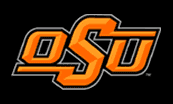
|
Oklahoma State University Stillwater, OK |
|
Oklahoma Alfalfa |
|

|
Oklahoma State University Stillwater, OK |
|
Oklahoma Alfalfa |
|
| FORAGE MOISTURE TESTERS
|
|
|
An electronic forage moisture tester can be a very useful tool when baling hay. There are several different types of testers on the market. Some testers require a small sample of chopped material for testing while others measure moisture content with a probe. For baled hay, the probe-type is one of the easiest and most convenient testers to operate because you can make measurements without taking samples. Do not use a moisture tester as your sole source of information to make management decisions. Forages are non-uniform when it comes to curing which means some parts of the plant dry faster than others. In addition, not all areas of a field dry at the same rate. When testing a bale, make at least five probes and average the readings. If the readings vary more than three percentage points, make several more probes before you calculate the average moisture content. Probe several bales at different locations in the field to account for field variations. Square bales should be probed from their ends while round bales should be probed through their diameter. Be sure you read the tester's instruction manual and become familiar with the proper operation and how to interpret readings. There are many factors that can adversely affect the tester's accuracy. These factors include surface moisture, bale density, and whether you apply a preservative to your forage. An example of how surface moisture can affect your readings is as follows. When you begin baling, you probe the first few bales and determine they are at about 18% moisture content. An hour later as the dew settles on the windrow, you check the bales leaving the baler and find your meter reads over 30%. The dew is giving you an erroneous reading because the moisture has changed the conductivity of the surface of the hay. Probing bales that are very loose may yield readings over two points lower than the actual moisture content. You may need to add a two-point correction to the readings. Some preservatives, such as proprionic acid, can increase readings as much as four percentage points. If you use preservatives and the instruction manual does not discuss the effects of chemicals on the instrument, contact the manufacturer of the tester for additional information. Electronic forage moisture testers can
be a valuable tool during baling when you know their limitations. Use meter
readings as guides, not absolute moisture values. After you gain a little
experience and confidence in the readings from your meter, you can use
it to supplement your own personal experiences when making management decisions.
|
|
| Raymond
L. Huhnke, Extension Agricultural Engineer
Department of Biosystems and Agricultural Engineering Oklahoma State University |
|